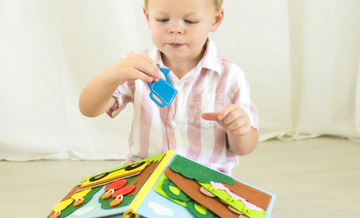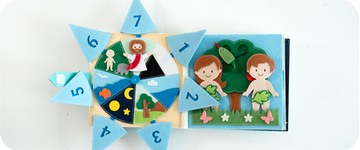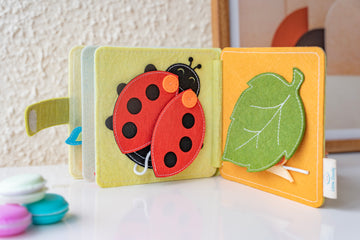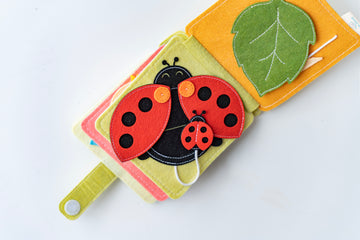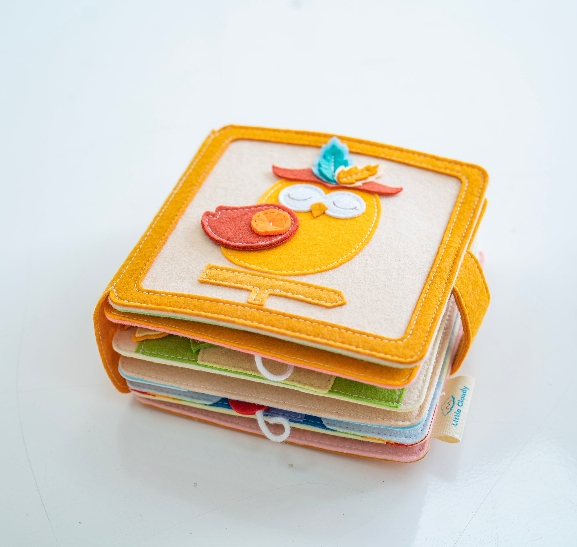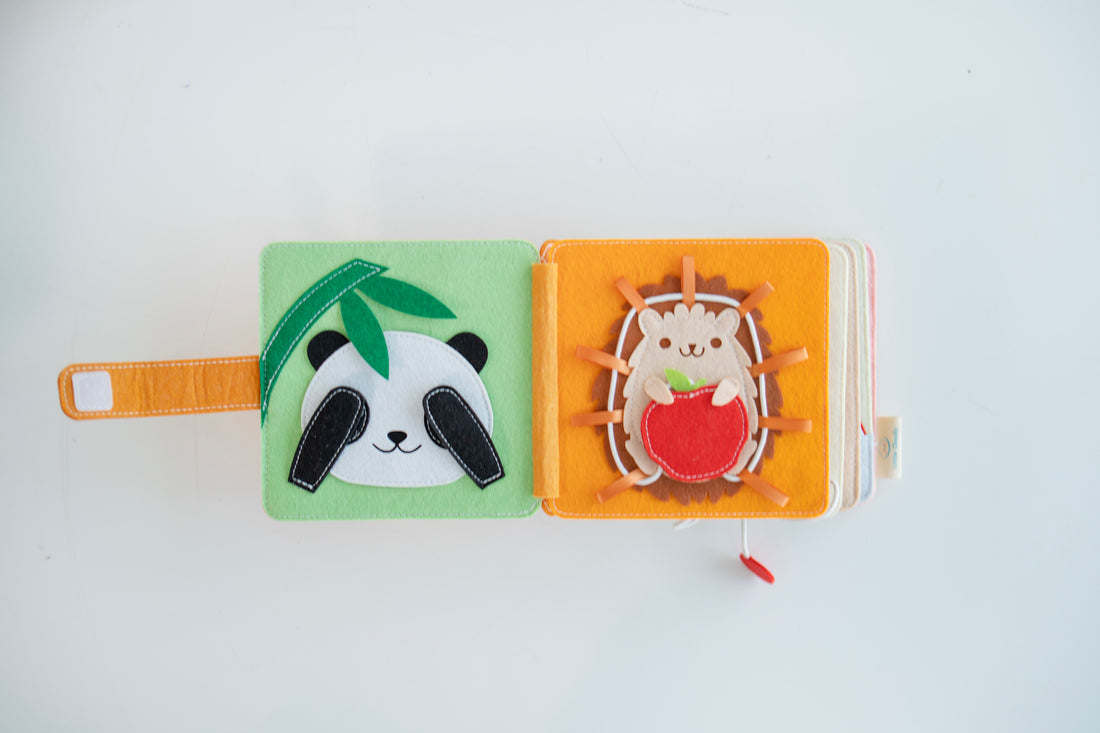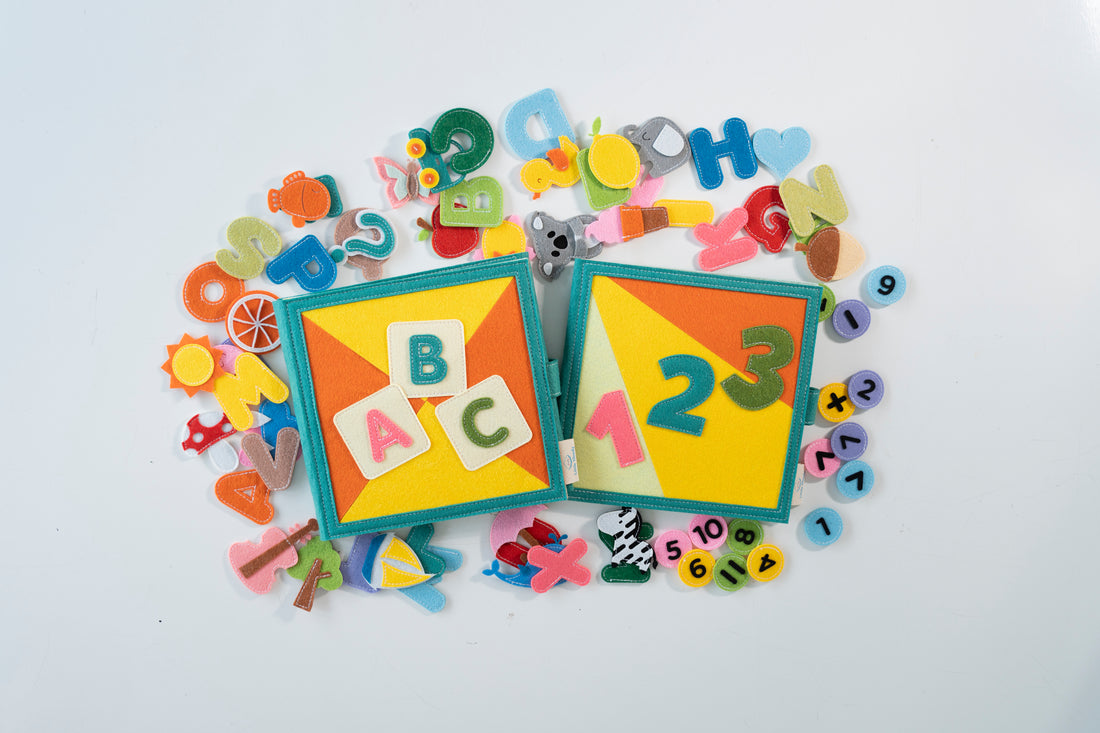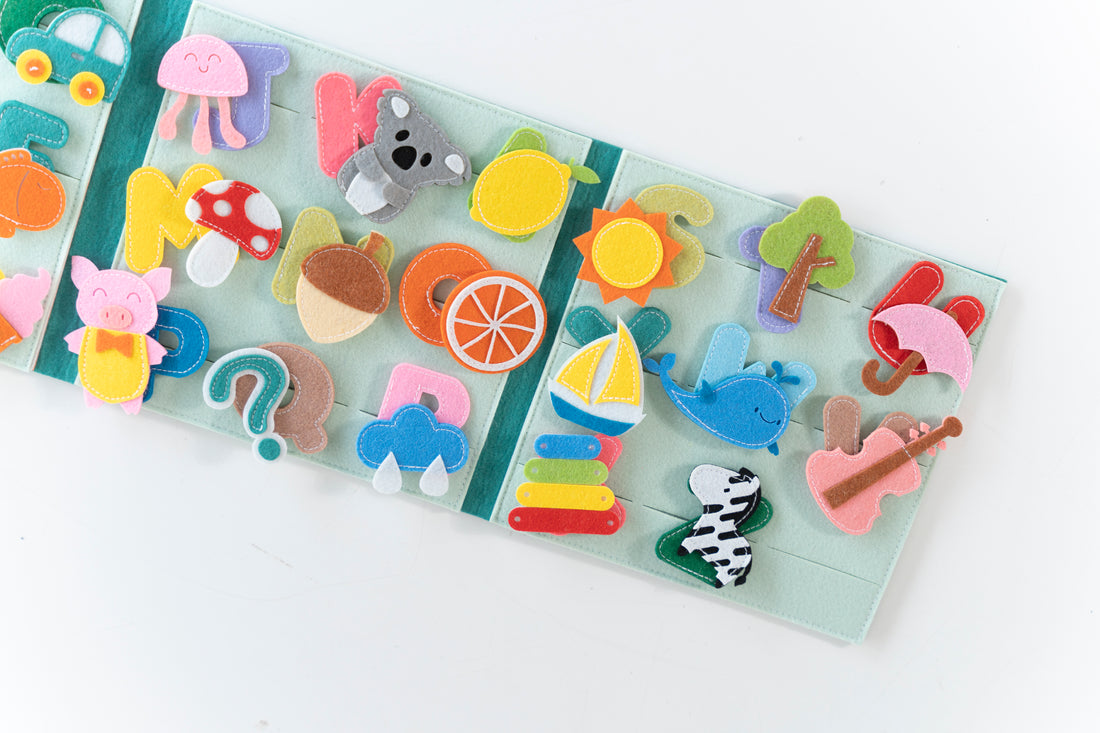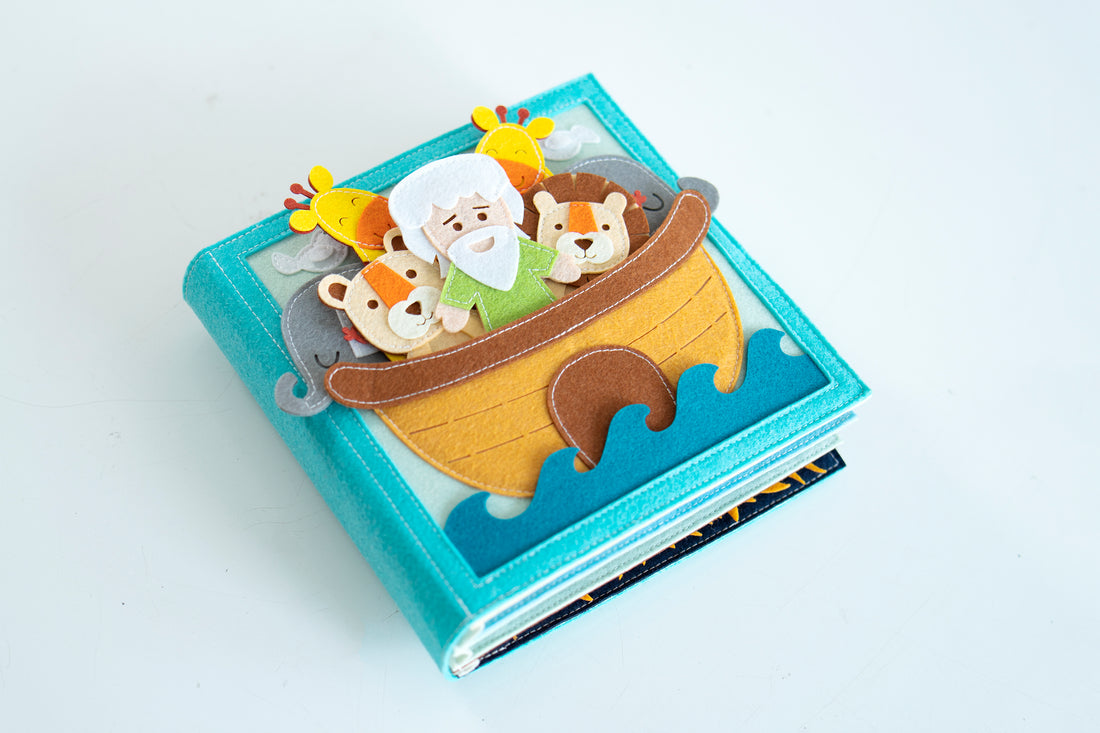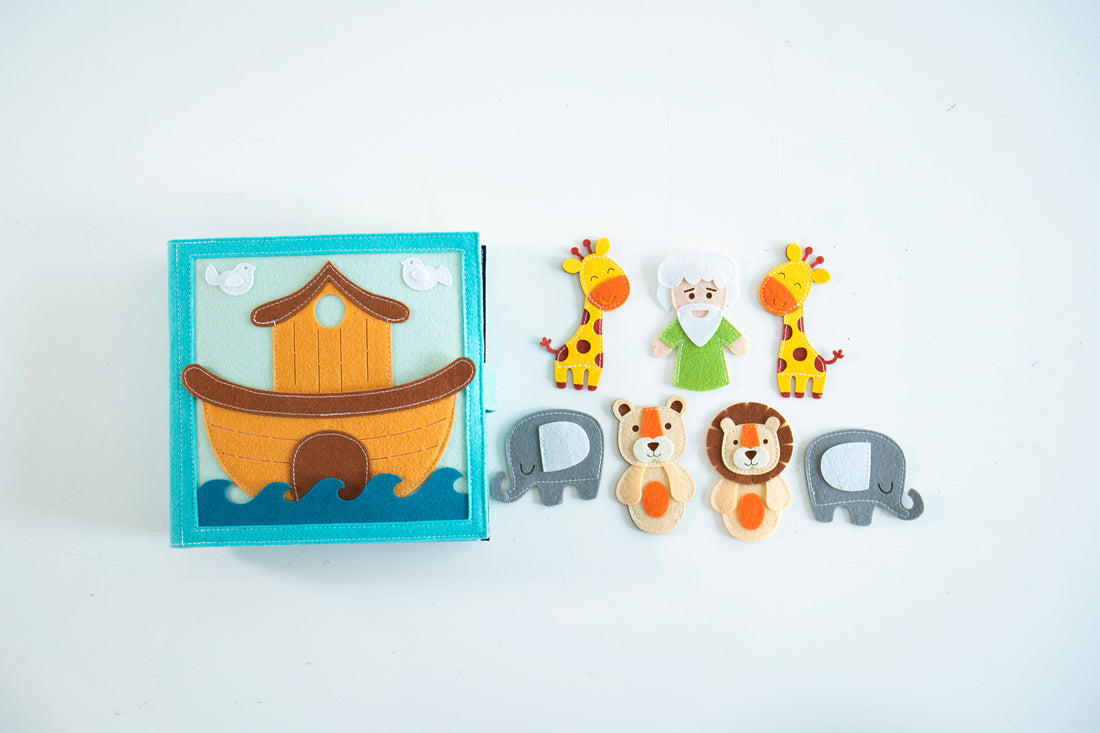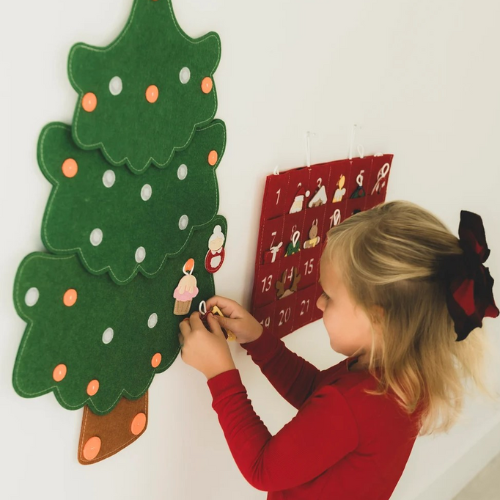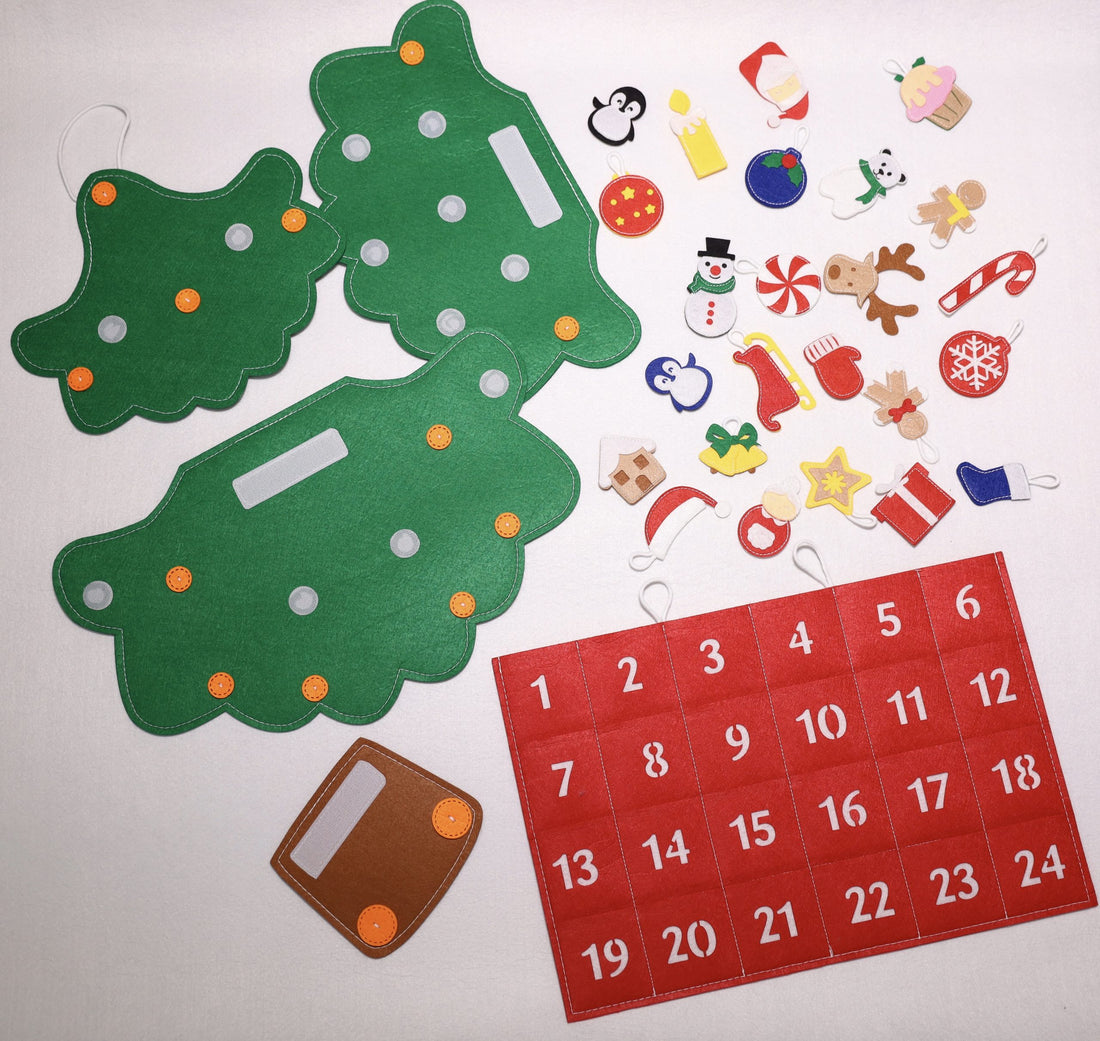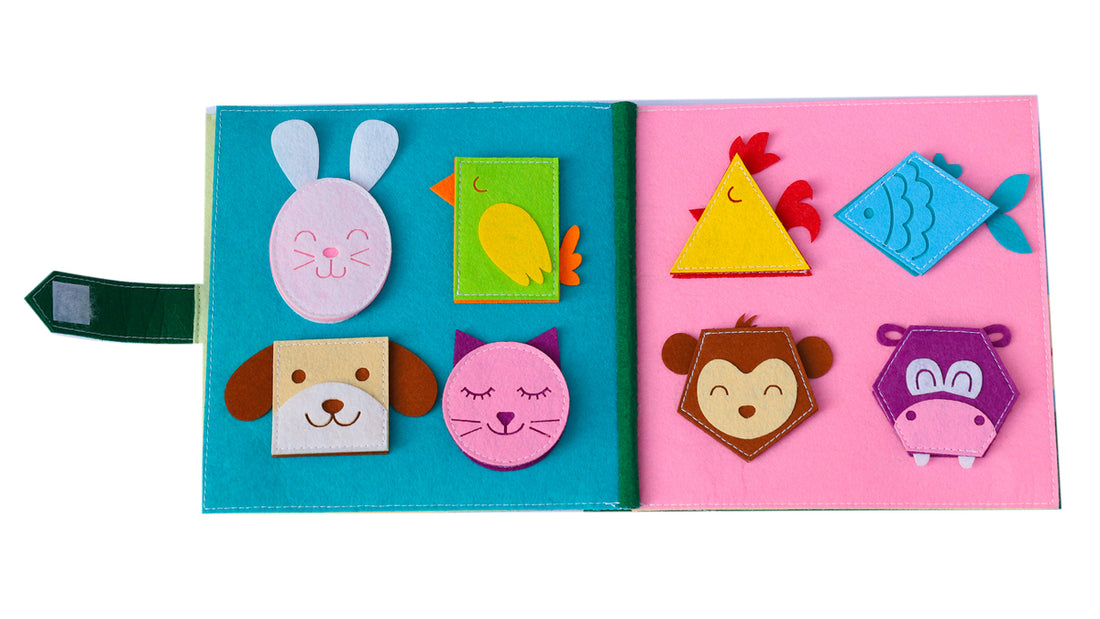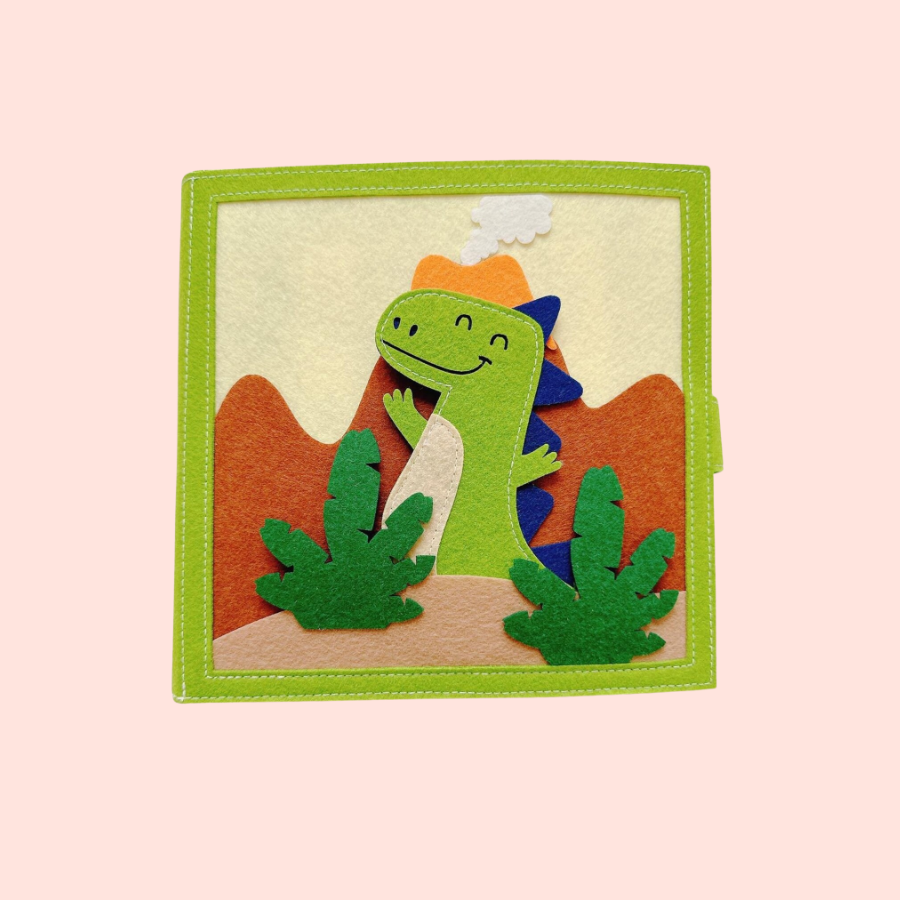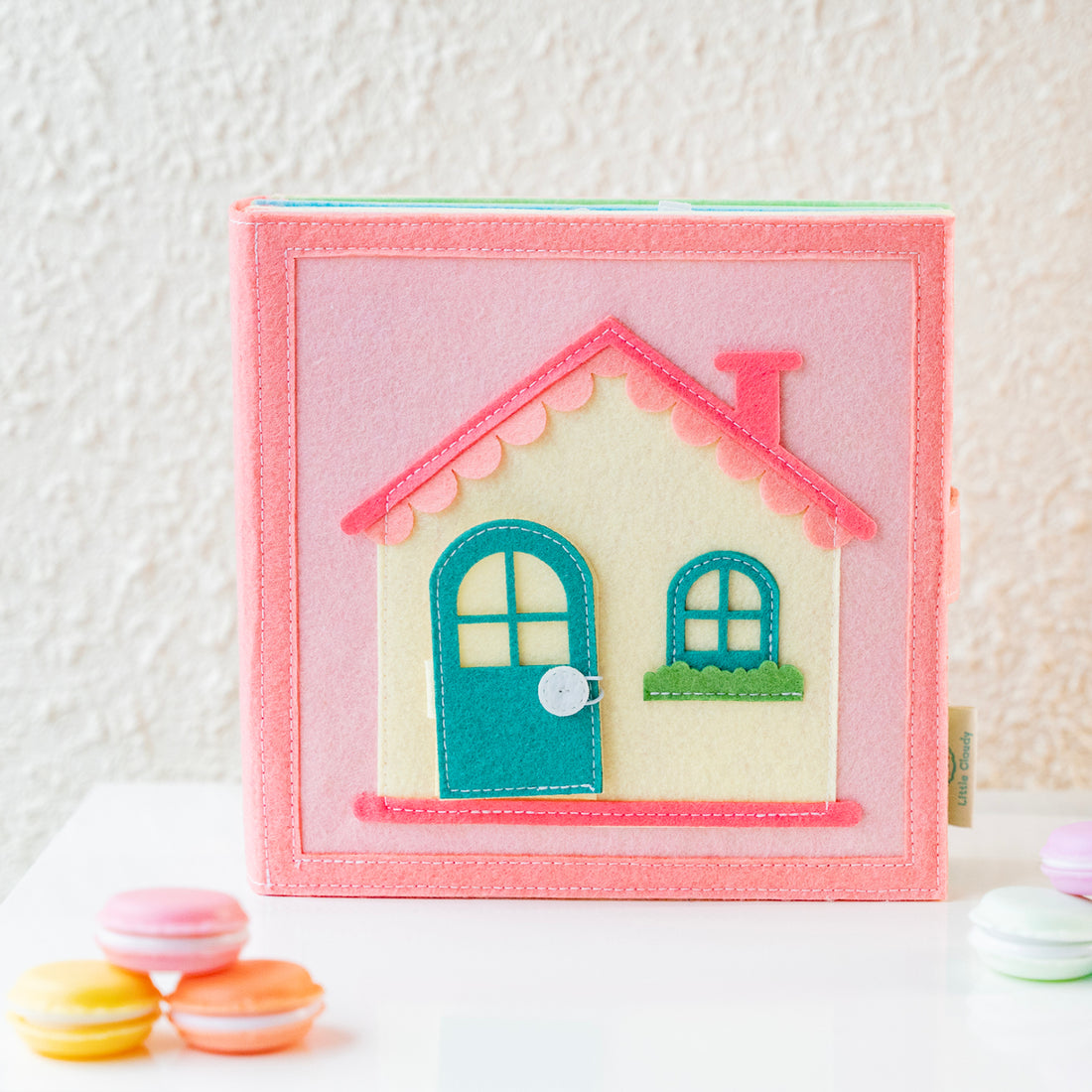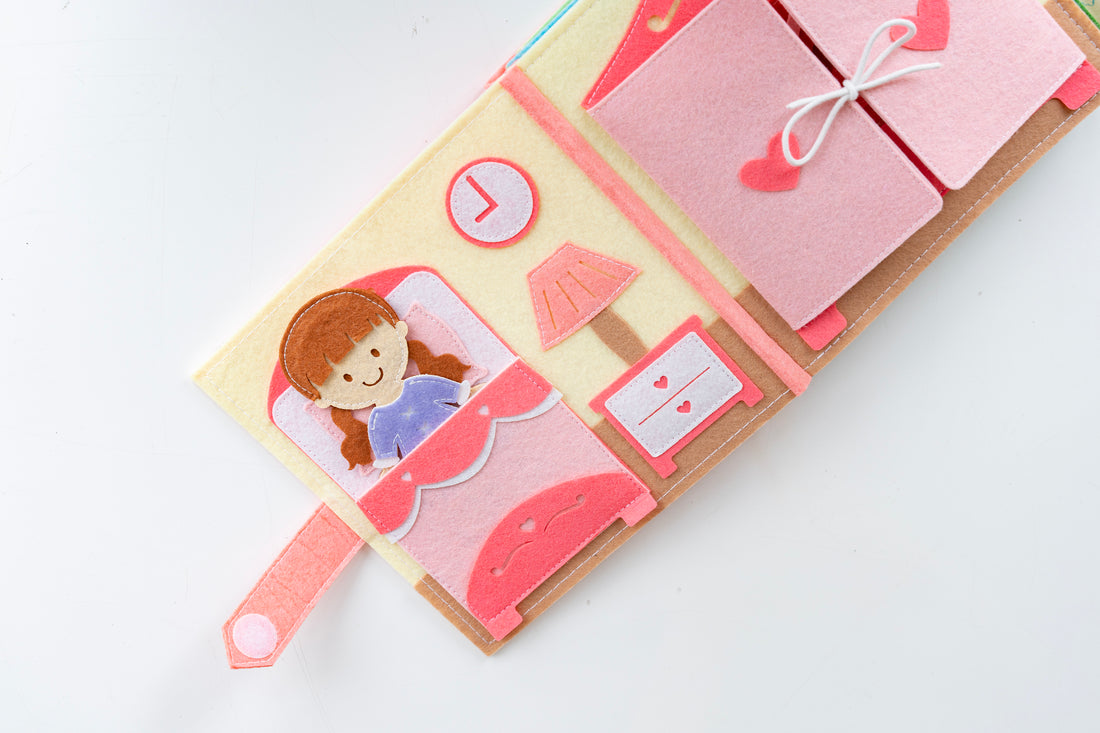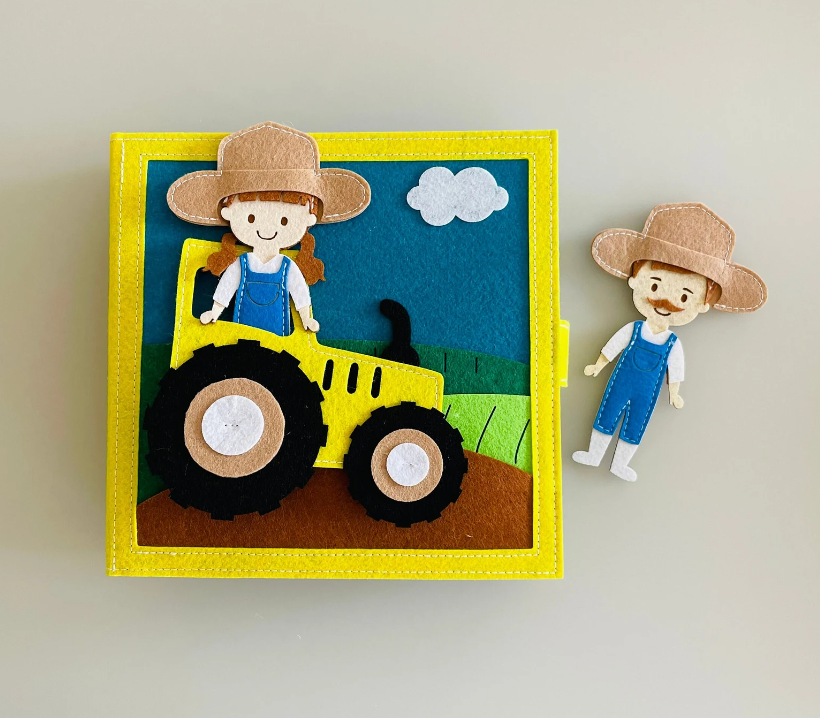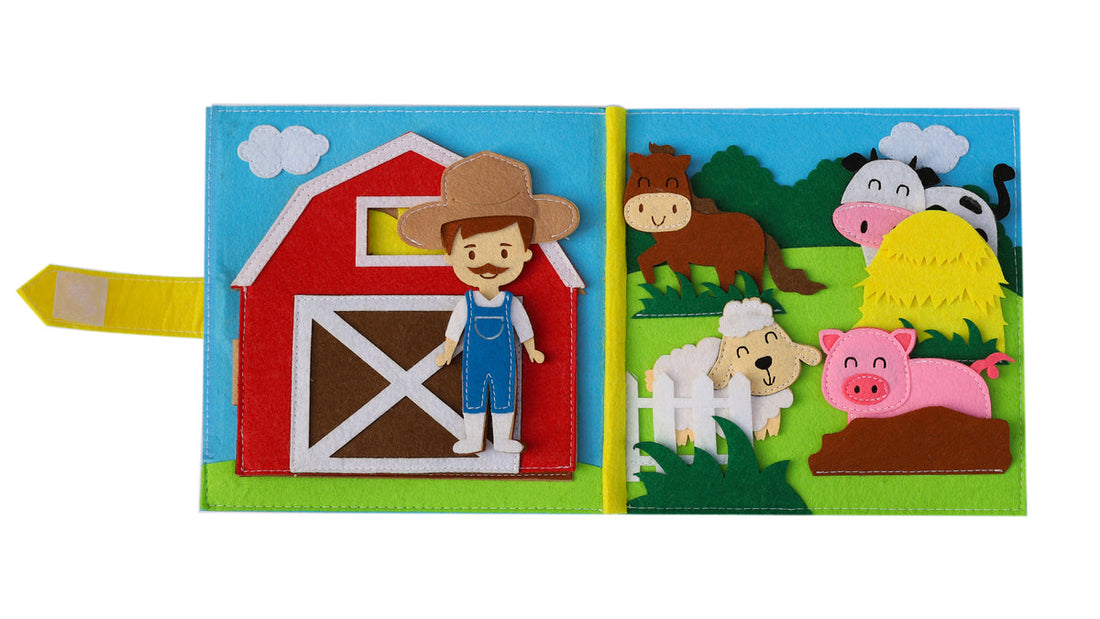In this comprehensive guide, we will explore the numerous benefits of busy books and how they contribute to your toddler's growth. From enhancing fine motor skills to fostering creativity and imagination, busy books offer a wide range of learning opportunities. They not only stimulate cognitive abilities but also develop problem-solving skills in a fun and engaging way. Additionally, busy books provide sensory play experiences that are essential for a child's overall development.
We will also delve into the process of choosing the right busy book for your toddler's unique needs and interests. Moreover, if you're feeling crafty, we'll discuss how to create your own DIY busy book for personalized learning experiences.
Join me on this exciting journey of unlocking the potential of busy books and watch your toddler thrive in their learning and development.
Understanding the Benefits of Busy Books
You'll be amazed at the endless possibilities and joy that busy books bring into your toddler's learning and development journey. Busy books offer a wide range of benefits that contribute to your child's growth and overall development.One of the key advantages of busy books is the importance of sensory stimulation. These books are designed to engage your child's senses, allowing them to explore different textures, colors, and sounds. This sensory experience helps to enhance their cognitive development and build neural connections in their brain.
Another benefit of busy books is that they boost social skills. These books often have interactive elements that encourage your child to play and engage with others. By sharing their busy book with a sibling or a friend, your toddler learns the importance of taking turns, sharing, and cooperating. This type of social interaction is crucial for their emotional and social development.
Busy books also encourage independent play. With various activities and tasks to complete, your child can explore and learn at their own pace. This independence fosters creativity, problem-solving skills, and self-confidence.
In addition, busy books help develop hand-eye coordination. Through activities that involve manipulating buttons, zippers, and buckles, your child's fine motor skills are strengthened. This coordination is essential for tasks such as writing, drawing, and self-care activities.
Lastly, busy books promote concentration and focus. With their interactive and engaging nature, these books require your child's attention and concentration. As they complete different activities, your toddler learns to stay focused and concentrate on the task at hand.
Busy books provide a multitude of benefits for your toddler's learning and development. They offer sensory stimulation, boost social skills, encourage independent play, develop hand-eye coordination, and promote concentration and focus. Incorporating busy books into your child's routine will not only bring them joy but also support their overall growth and development.
Choosing the Right Busy Book for Your Toddler
When picking the perfect busy book for your little one, make sure to consider their interests and developmental needs. Choosing the right busy book is essential for their learning and development.How to select the perfect busy book? Well, there are a few factors to consider when choosing a busy book for your toddler. First, think about their age and stage of development. Different busy books are designed for different age groups, so make sure to find one that is appropriate for your child's abilities.
Second, consider their interests. Look for a busy book that aligns with their favorite themes or activities. If they love animals, find a busy book with animal-themed activities. If they enjoy puzzles, look for a busy book that includes puzzles or problem-solving activities.
Lastly, consider the materials and durability of the book. Toddlers can be rough with their toys, so finding a busy book that is sturdy and can withstand their active play is important.
By following these tips for picking the right busy book, you can find the ideal busy book for your child and support their learning and development.
Exploring Fine Motor Skills through Busy Books
Enhance your child's motor skills and coordination by engaging them in the interactive activities found in these engaging busy books.Exploring textures is a great way for toddlers to develop their fine motor skills. Busy books often include different textures for children to touch and feel, such as soft fur or bumpy surfaces. By exploring these textures, toddlers can improve their ability to use their fingers and hands with precision.
Building dexterity is another important aspect of fine motor skill development. Busy books often have activities that require children to manipulate small objects, like buttons or zippers. This helps toddlers to refine their hand-eye coordination and finger strength.
Color recognition is a skill that busy books can help toddlers develop. Many busy books have pages with vibrant colors that children can identify and name. By interacting with these colors, toddlers can improve their ability to distinguish between different hues.
Shape recognition is also incorporated into busy books. Toddlers can learn to identify and match shapes by playing with puzzles or activities that involve fitting objects into corresponding cutouts. This helps them develop their cognitive skills and spatial awareness.
Counting skills are another important aspect of a toddler's development. Busy books often include activities that involve counting objects or arranging items in numerical order. By engaging in these activities, toddlers can improve their ability to count and understand numerical concepts.
Overall, busy books provide a comprehensive way for toddlers to explore and improve their fine motor skills while also learning important concepts like color recognition, shape recognition, and counting skills.
Enhancing Cognitive Abilities with Busy Books
Discover the incredible world of possibilities and watch your little one's mind expand as they engage with the captivating activities in these interactive busy books.Busy books are not only great for developing fine motor skills, but they also play a vital role in enhancing cognitive abilities in toddlers.
One key aspect of cognitive development that busy books promote is memory retention. These books often include activities that require children to remember patterns, shapes, or sequences, which helps improve their memory skills. By repeating these activities, toddlers are able to strengthen their memory recall abilities.
Furthermore, busy books provide problem-solving exercises that stimulate critical thinking and problem-solving skills. Whether it's figuring out how to fit puzzle pieces together or matching objects, these activities encourage toddlers to think logically and find solutions to challenges.
Busy books also aid in improving attention span. With their engaging activities and colorful illustrations, toddlers are encouraged to focus and concentrate for longer periods of time. This ability to sustain attention is crucial for future learning and academic success.
Lastly, busy books offer multisensory learning experiences. They incorporate various textures, sounds, and visual elements that engage multiple senses simultaneously. This multisensory approach enhances the learning process and helps toddlers make connections between different concepts.
Busy books provide a holistic approach to toddler learning and development. They not only enhance fine motor skills but also promote memory retention, cognitive development, problem-solving skills, attention span, and multisensory learning. So, dive into the world of busy books and witness the magic unfold as your little one's cognitive abilities flourish.
Fostering Creativity and Imagination with Busy Books
Unleash your little one's boundless creativity and imagination with the endless possibilities found within these interactive busy books. Busy books offer a wide range of activities that foster imaginative play and storytelling opportunities.With colorful and engaging pages, children can immerse themselves in a world of make-believe and create their own stories. Whether it's pretending to be a chef in a busy kitchen or going on an adventure with their favorite animal characters, busy books provide the perfect platform for imaginative play.
Not only do busy books enhance creativity, but they also help in building fine motor skills. From zipping zippers to tying shoelaces, these books offer various activities that require children to use their hands and fingers, improving their dexterity and coordination. As they manipulate buttons, snaps, and Velcro, their fine motor skills are strengthened, preparing them for more complex tasks in the future.
One of the great benefits of busy books is that they encourage independent play. With numerous activities to explore, children can engage in independent play, allowing them to develop their problem-solving skills and build confidence in their own abilities. They can spend hours exploring each page, discovering new textures, colors, and shapes, all while developing their imagination and creativity.
Furthermore, busy books spark curiosity and exploration. Each page is filled with interactive elements that encourage children to touch, feel, and explore. By engaging their senses, busy books stimulate curiosity and encourage children to investigate and discover new things. Whether it's lifting flaps, turning wheels, or pressing buttons, busy books provide endless opportunities for exploration and learning.
Busy books are a fantastic tool for fostering creativity and imagination in toddlers. Through imaginative play, storytelling, fine motor skill development, independent play, and curiosity-sparking activities, these books provide a comprehensive approach to early learning and development. So, go ahead and introduce your little one to the magic of busy books and watch their creativity and imagination soar!
Incorporating Language and Communication Skills
After exploring the benefits of fostering creativity and imagination with busy books, it's time to dive into the next exciting aspect: incorporating language and communication skills. This is where the magic truly happens!Busy books are not only a source of entertainment; they're also a powerful tool for learning and development.
One of the key advantages of busy books is that they can actively promote vocabulary development. Through interactive activities and colorful illustrations, toddlers can learn new words and expand their language skills in a fun and engaging way.
Additionally, busy books provide opportunities for social interaction, as children can discuss and share their experiences with others, enhancing their communication abilities.
Listening skills are also improved as children engage with busy books. They learn to focus and pay attention to the storyline, following instructions and understanding the content. This not only helps them in their everyday lives but also prepares them for future learning experiences.
Another incredible benefit of busy books is that they enhance storytelling abilities. As children explore different characters and settings, they develop their imaginative thinking and narrative skills. They can create their own stories and engage in imaginative play, fostering creativity and self-expression.
Overall, busy books are a fantastic resource for incorporating language and communication skills. They encourage expressive language, promote social interaction, improve listening skills, and enhance storytelling abilities.
So, let's dive into the world of busy books and watch our toddlers thrive in their learning and development journey.
Developing Problem-Solving Skills with Busy Books
Developing problem-solving skills can be greatly facilitated by engaging with busy books, as they provide opportunities for toddlers to think critically and find solutions to various challenges presented in the interactive activities. Problem-solving activities in busy books involve hands-on learning, where toddlers can manipulate objects and explore different solutions.These interactive challenges encourage toddlers to use their cognitive abilities and engage in critical thinking exercises. By working through these activities, toddlers learn to analyze problems, come up with creative solutions, and develop their problem-solving skills.
Busy books offer a wide range of cognitive development opportunities for toddlers. They provide activities that require toddlers to match shapes, solve puzzles, and complete sequences, which help in developing their logical reasoning skills. For example, a busy book may have a page with buttons of different colors and shapes that need to be matched with corresponding holes. This activity not only engages toddlers in a hands-on learning experience but also encourages them to think critically about the shapes and colors, and find the correct match.
Engaging with busy books not only enhances problem-solving skills but also fosters a sense of accomplishment and confidence in toddlers. As they successfully complete various challenges, toddlers develop a positive attitude towards problem-solving and become more eager to explore new challenges.
Busy books provide a fun and interactive way for toddlers to develop their problem-solving skills, setting a strong foundation for their future learning and development.
Engaging in Sensory Play with Busy Books
Engaging with sensory play in busy books allows me to experience a wide range of textures, sounds, and colors, providing a stimulating and immersive learning experience. Sensory exploration is a crucial aspect of a toddler's development, and busy books offer the perfect platform for this.With various textures like soft fur, rough sandpaper, and smooth satin, I can feel and explore different sensations. The interactive nature of busy books encourages hands-on engagement, allowing me to actively participate in the learning process.
Tactile stimulation is an essential component of sensory development, and busy books provide a multitude of opportunities to engage my sense of touch. I can feel the different textures of fabrics, press buttons to hear sounds, and manipulate objects to understand cause and effect. This hands-on approach helps me develop fine motor skills and hand-eye coordination.
Moreover, busy books offer a wide array of colors, captivating my visual senses. Vibrant hues and contrasting patterns stimulate my curiosity and encourage visual exploration. As I flip through the pages, I discover new colors and patterns, enhancing my visual perception and understanding of the world around me.
Overall, engaging in sensory play with busy books not only provides interactive learning experiences but also promotes sensory development. By actively exploring textures, stimulating my sense of touch, and engaging my visual senses, busy books become a valuable tool in my learning journey.
Creating DIY Busy Books for Personalized Learning
When creating your own DIY busy books, you can personalize the activities to cater specifically to your child's interests and learning needs. By designing the pages with personalized themes and incorporating interactive activities, you can engage your toddler in a fun and educational way.One way to personalize your busy book is by creating custom designs that reflect your child's favorite things. Whether it's animals, vehicles, or colors, you can incorporate these elements into the pages to capture their attention and keep them engaged.
Furthermore, sensory exploration is a crucial aspect of toddler learning and development. By including textures, fabrics, and different materials in the busy book, you can provide opportunities for your child to engage in sensory play. They can touch, feel, and explore different textures, promoting their sensory development.
Another important aspect to consider when creating your DIY busy book is incorporating educational themes. You can focus on numbers, letters, shapes, or even basic math skills. By introducing these concepts through interactive activities, such as matching, sorting, or tracing, you can foster your child's cognitive development while they have fun.
Lastly, storytelling elements can be included in your busy book to enhance your child's imagination and language skills. You can create pages that tell a story or have characters they can interact with. This not only encourages language development but also sparks their creativity and love for storytelling.
Overall, creating a DIY busy book allows you to tailor the activities to your child's unique interests and learning needs. By incorporating personalized designs, interactive activities, sensory exploration, educational themes, and storytelling elements, you can provide a comprehensive learning experience that keeps your toddler engaged and excited to learn.
Tips for Maximizing the Learning Potential of Busy Books
To make the most of your DIY busy book, here are some tips to help you unleash your child's creativity and curiosity. Maximizing engagement is key to ensuring that your child stays interested in their busy book.One way to achieve this is by incorporating interactive learning activities. For example, you can create pages that require your child to match shapes or colors, or even solve puzzles. This will not only keep them engaged, but also enhance their cognitive development.
Another tip is to provide multi-sensory experiences. By incorporating different textures, sounds, and visuals into your busy book, you can stimulate your child's senses and make learning more enjoyable. For instance, you can add buttons that make a clicking sound, or fabric that feels soft to touch. This will make educational playtime more engaging for your child.
Additionally, it is important to prioritize your child's interests and preferences when creating your busy book. By incorporating themes or characters that your child loves, you can spark their curiosity and make learning more meaningful to them. This personalized approach will enhance their motivation to explore and learn.
By maximizing engagement, providing multi-sensory experiences, and catering to your child's interests, you can create a busy book that not only entertains, but also promotes educational playtime and cognitive development.
Frequently Asked Questions
How much time should my toddler spend with a busy book each day?
I believe that toddlers should spend at least 15-30 minutes with a busy book each day. It offers numerous benefits, such as promoting fine motor skills, cognitive development, and creativity. To maximize the benefits, make sure to choose age-appropriate activities and engage with your child during playtime.Are there any safety concerns I should be aware of when using busy books with my toddler?
When using busy books with my toddler, I need to take safety precautions. I should check for choking hazards, ensure age appropriateness, use non-toxic materials, and provide supervision at all times.
Can busy books help with my toddler's social skills development?
Busy books provide numerous benefits for toddlers, including enhancing social interaction and communication skills. They encourage problem-solving and promote emotional development. Through engaging activities, toddlers can develop essential skills needed for social interactions and emotional awareness.What age range are busy books suitable for?
Busy books are suitable for toddlers aged 1-4. They offer different types of activities that help with their learning and development. The benefits include improving fine motor skills, cognitive abilities, and problem-solving. Popular themes and interactive features make them engaging. DIY options are also available.Can busy books be used as a tool for managing tantrums or meltdowns in toddlers?
Busy books can be a helpful tool for managing tantrums and meltdowns in toddlers. They provide alternative coping strategies, promote emotional regulation techniques through sensory play, and the role of routine in tantrum prevention is important. Parental support is crucial in using busy books effectively.
Busy book, a comprehensive guide for toddlers' learning and development
In conclusion, busy books are an incredible tool for toddlers' learning and development. They offer a wide range of benefits, from enhancing fine motor skills to fostering creativity and problem-solving abilities. By engaging in sensory play and exploring different activities, children can further expand their cognitive abilities.Additionally, the personalized touch of DIY busy books adds a special element of customization to the learning experience. With these tips and the magic of busy books, parents can maximize their child's learning potential in a fun and interactive way.


